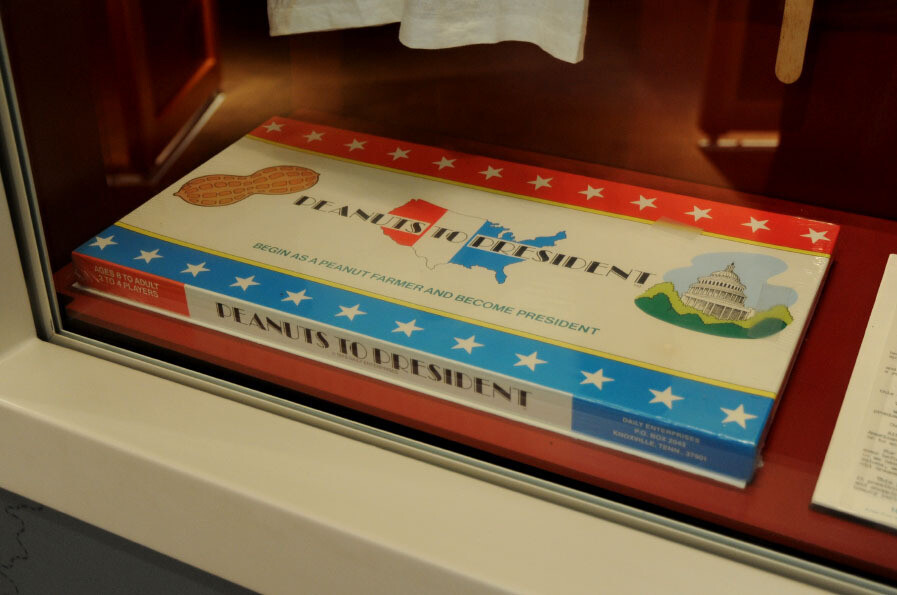
The Jimmy Carter National Historic Site covers much of the town of Plains, Georgia, where the president was born, and where he still resides.

He was born in 1924 at a sanitarium in town, where his mother was a nurse. Carter was the first president born in a hospital. He attended school in this building from first grade to graduation, in 1941. After that he went away to college, then the Navy, where he specialized in nuclear propulsion, and worked at the Knolls Atomic Lab, in Schenectady, New York.

When his father died in 1953, Carter returned to Plains, to run the family peanut farm and processing plant, which is still functioning as a peanut warehouse. He got into politics, and eventually became governor, then president, beating Ford in 1976.

He ran his campaign out of the old railway depot in town, and was known as the peanut farmer from Plains.

The Plains High School building closed in 1979, and is now a museum and visitor center for the Carter Historic Site. Inside visitors watch an orientation film, and see the classrooms where he was educated.

Other places in the National Historic Site include the train depot, his brother Billy’s gas station, a public housing apartment the Carter’s lived in briefly in 1953, the church he still attends, and his boyhood home, on a farm a couple of miles out of town.

The Carters live in a house they built in 1961, the only house they have ever owned. It is located within the Carter Compound, a fenced restricted area. The entrance to the home, on Woodland Drive, is through a Secret Service gate.

The Secret Service operates out of a house on the property, and the Carters are often at home.

His presence extends beyond Plains, including the airport nearby, which he uses to come and go.

Nearby Americus, Georgia, is the headquarters for Habitat for Humanity, an organization he is deeply involved in. They operate a global village housing display park near their headquarters.

The Carter Center, based in Atlanta, is the international human rights organization he established after his presidency, and for whose work he received the Nobel Peace Prize in 2002.

It is headquartered on the grounds of his official presidential library and museum, part of the National Archives, which opened in 1986, on Carter’s 62nd birthday. The museum was updated and expanded in 2009, and was rededicated by Carter later that year, on his 85th birthday.

The library houses 27 million pages of documents, and has the usual displays about the presidential life and his times.

Including a replica of the Oval Office, as it appeared during his time in it.

